Gastritis Diet Menu Plan: Foods To Eat And Avoid
Manage your symptoms and pain better by keeping a close eye on your dietary plan.

Image: Midjourney/ StyleCraze Design Team
If your stomach gets upset or aches often and you experience bloating or indigestion, you are probably experiencing gastritis symptoms.
A nationally representative survey of over 71,000 Americans was conducted to evaluate the prevalence and frequency of gastrointestinal (GI) symptoms. The results reported that an average of 61% suffered from GI symptoms. The percentages of common symptoms include- heartburn (30.9%), abdominal pain (24.8%), bloating (20.6%), diarrhea (20.2%), and constipation (19.7%).
Following a gastritis diet plan, coupled with some healthy lifestyle changes, can help treat this inflammation of the stomach’s lining.
However, it is better to consult a doctor before taking any remedial steps as some forms of gastritis may cause gastric cancer and ulcers.
This article discusses all that you need to know about gastritis, its causes, an effective diet plan to treat this inflammatory condition, foods to eat and avoid, and some easy and delicious recipes to get started with the diet. Keep scrolling to know more!
 At A Glance: Gastritis Diet
At A Glance: Gastritis Diet- Principle: High-fiber diet rich in healthy fats, lean proteins, probiotics, and flavonoids with restricted consumption of acidic, processed, and dairy foods
- Purpose: To alleviate inflammation in the digestive tract
- Who Is It For: Individuals with gastritis.
- Duration: Short-term
- Caution: Avoid spicy and fried foods, beverages, alcohol, and any food items that may irritate your stomach. Go for gluten-free, whole-food options to recover from the symptoms.
In This Article
What Is Gastritis?
Gastritis refers to the inflammation of the stomach lining caused either by a Helicobacter pylori infectioni Infection caused by H. pylori bacteria that affects the stomach or small intestine, most commonly in the form of peptic ulcers. or by the excessive administration of non-steroidal anti-inflammatory drugs (NSAIDsi Medicines used to reduce pain and fever and decrease inflammation. ) (medicine-induced gastritis). It can be either acute (sudden onset) or chronic (develops over time) in nature (1).
 Did You Know?
Did You Know?Following a healthy diet can help alleviate the symptoms of gastritis. Check out how it works below.
Gastritis Diet – How It Helps
The main aim of a gastritis diet is to control H.pylori infection and alleviate gastritis symptoms.
A gastritis prevention diet should be:
- High in fiber: Consume a high-fiber diet for gastritis. A high-fiber food is beneficial for your gut. The undigested portions of dietary fiber produce short-chain fatty acidsi They are produced in the large intestine by friendly gut bacteria which are the main source of energy for the colon cells. that have a beneficial effect on gut bacteria (2).
- Enriched with healthy fats: Fatty foods are not the best choice for treating gastritis, but healthy fats definitely work wonders for it. Include nuts, seeds, and oily fish that are rich in omega-3 (polyunsaturated) fatty acids to reduce stomach inflammation (3). According to Jesse Feder, Clinical Dietitian at the Memorial Regional Hospital South, tuna is one of the great options for gastritis. He says, “Tuna is a great source of omega-3 fatty acids, which are healthy fats with anti-inflammatory properties. This can help reduce the inflammation in the stomach and help alleviate symptoms of gastritis.”
- High in lean protein: Lean proteins may help repair the damaged stomach lining and build stamina.
- High in probiotics: Include foods and drinks rich in probioticsi Good, live bacteria found naturally in the body and in fermented foods like pickles and yogurt that help keep your gut healthy. or live organisms. Studies have found that probiotics help eradicate H.pylori and reduce stomach inflammation (4).
- Rich in flavonoids: Include spices, herbs, and condiments in your diet. Flavonoid-rich foods exhibit antibacterial properties that can eradicate H.pylori (5).
Cutting down on highly acidic foods, processed foods, and dairy can help minimize acid secretion in the stomach and provide relief from the symptoms of gastritis.
Now, you are quite aware of what kind of foods to be included in the diet for relief from stomach irritation and discomfort. Here’s a sample gastritis meal plan that gives an idea of what to include in your daily meals.
| MEALS | WHAT TO EAT |
|---|---|
| Early Morning | 4 overnight-soaked almonds + 1 glass of water |
| Breakfast | Overnight oatmeal with chopped fruits, nuts, and seeds (1 cup) OR Toasted whole wheat bread (1 slice) + 1 sunny-side up egg + Any whole fruit (1) |
| Mid-Morning | Vegetable juice (with pulp) with 1 tablespoon soaked chia seeds (1 glass) OR Kombucha tea with roasted walnuts |
| Lunch | Blanched broccoli sauteed and tossed with garlic (1 cup) + ½ cup vegetable quinoa/brown rice + Grilled salmon with herbs + 1 glass buttermilk with roasted cumin (jeera) seeds OR Chicken burrito bowl + Yogurt |
| Snacks | Sweet potato mash OR Bean sprout salad (boiled) |
| Dinner | Asparagus soup + Grilled chicken with garlic-tossed vegetables OR Whole wheat vegetable pasta + Grilled turkey breast |
Here are lists of foods that you must eat and avoid when you are experiencing gastritis.
Foods To Eat
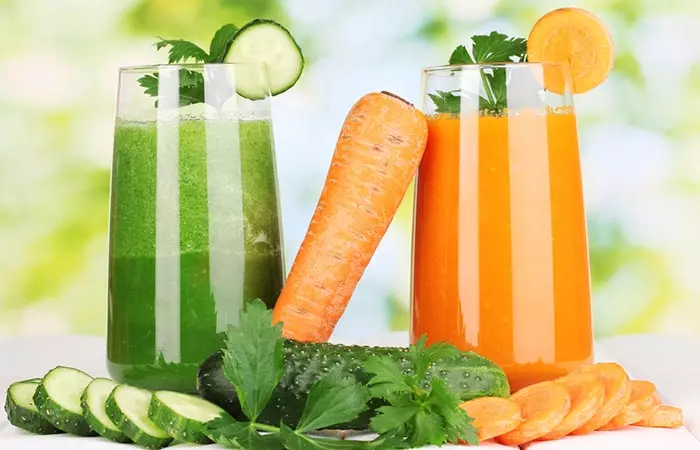
There are certain foods that reduce gastritis symptoms and provide relief to stomach irritation and bloating. Gastritis-friendly foods include
- High-fiber whole foods like whole grains, beans, and legumes.
- Healthy fats from nuts, seeds, and fish oil rich in omega-3 fatty acids.
- Lean protein like chicken, poultry meat, and oily fish.
- Low acid diet for gastritis includes vegetable juice with pulp, cucumber, potato, carrot, broccoli, asparagus, pumpkin, etc.
- Probiotics or fermented foods like kombucha, yogurt, kimchi, kefir, sauerkraut.
- Low-sugar, low-acid fruits like blueberries, strawberries, and apples.
- Functional foods like ginger, garlic, turmeric.
Foods To Avoid
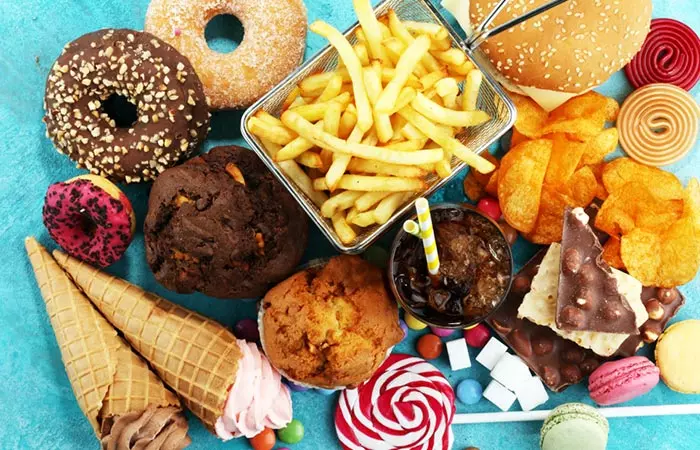
Foods that increase the acid levels in the stomach and cause more discomfort need to be avoided. These include:
- Acidic fruits (citrus family) and vegetables like onion
- Beverages like coffee and tea
- Alcohol
- Carbonated energy drinks and sodas
- Fried foods that are rich in saturated and trans fats
- Dairy products like milk, cheese, ice-cream, etc.
- Avoid spicy foods
- Opt for a gluten-free diet
- Sauces, spreads, and pickles
 Quick Tip
Quick TipMarisha, a blogger with a doctorate in cognitive neuroscience, writes on her experience with gastritis and everything that she eats and avoids. When it comes to vegetables, she observes, “There are plenty of vegetables that I don’t eat in large amounts because they irritate my stomach. For instance, lettuce, raw spinach, raw kale, raw tomatoes, and raw peppers. (i).” She also avoids excessive consumption of fruits, nuts, seeds, spicy foods, junk food, and alcohol.
Now that you know what foods to eat and avoid if you have gastritis, here are a few quick recipes you can try that are not only delicious but also healthy.
Gastritis Diet Recipes
1. Chicken Barley Soup
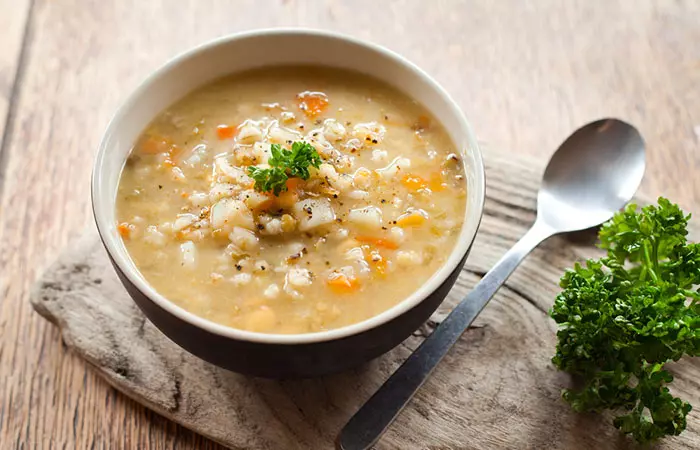
Ingredients
- Cooked pearl barley – 80g
- Chicken breast pieces – 85g
- Chopped carrot – 50g
- Chopped broccoli – 44g
- Salt – 0.4g
How To Prepare
- Boil the chicken in a pot.
- Add the barley, carrot, and broccoli.
- Reduce the heat, and cover and cook for 10 minutes.
- Add salt.
2. Rice And Vegetable Khichdi
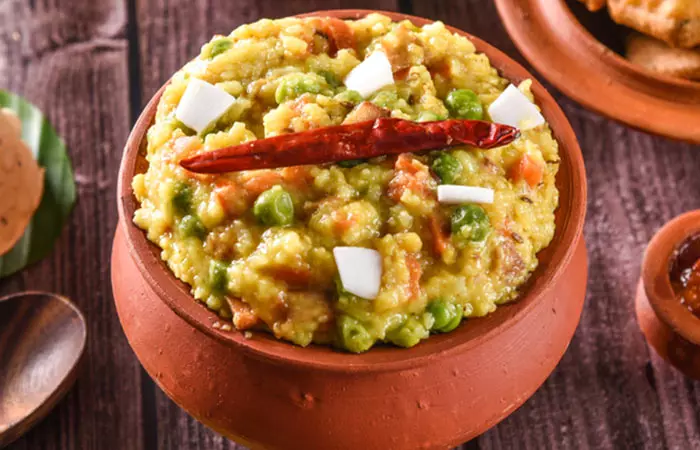
Ingredients
- Cooked rice – 75 g
- Soaked green beans – 13 g
- Raw peanuts – 15 g
- Chopped carrots – 50 g
- Chopped cauliflower – 50 g
- Salt – 0.5 g
How To Prepare
- Stir fry the green beans, peanut, carrots, and cauliflower in olive oil. Keep them aside.
- Add half a cup of water to the rice and bring it to a boil. Stir until the rice gets soft.
- Add the vegetables, peanuts, and salt.
- Cook until soft.
3. Banana And Yogurt Smoothie
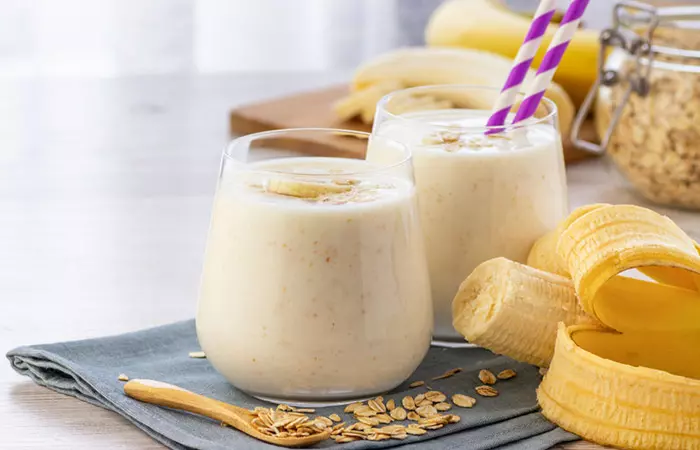
Ingredients
- Organic yogurt – 100 g
- Bananas – 1-2
- Honey – 20 g
- Almonds – 3-5 (Optional)
How To Prepare
- Put all the ingredients in a blender. Add ice if needed.
- Blend and serve.
4. Mashed Sweet Potatoes
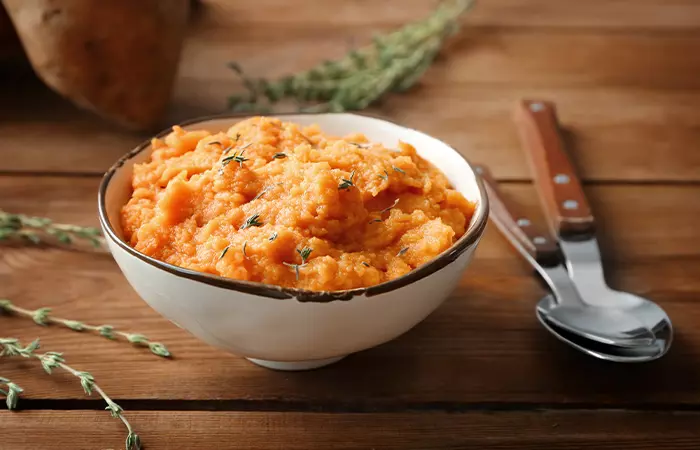
Ingredients
- Large sweet potatoes – 4 to 5
- Kosher salt – 1 teaspoon
- Fresh thyme leaves – 1 tablespoon
- Minced garlic – 1 clove
- Black pepper – ½ teaspoon
- Olive oil – 1 tablespoon
How To Prepare
1. Wash and peel the sweet potatoes and cut them into small cubes.
2. Boil 2 cups of water in a medium saucepan and add the potatoes and salt.
3. Bring them to a boil and simmer for 15 minutes.
4. Turn off the heat and drain the water from the saucepan.
5. Let the boiled sweet potatoes cool a little and toss them into a food processor.
6. Blend until smooth and season with salt, pepper, garlic, and thyme leaves.
7. Transfer to a serving bowl and add some extra virgin olive oil.
8. Mix well and serve.
Here are the tips to help you navigate your gastritis meal planning with ease and confidence.
Meal Planning Tips
- Prioritize small, frequent meals throughout the day to avoid overwhelming your stomach and manage acidity levels.
- Cook meals in batches, so you always have options ready, reducing stress during busy days.
- Incorporate foods like oatmeal, bananas, and sweet potatoes that are gentle on the stomach.
- Track what you eat and how it affects your symptoms to identify any foods that may cause discomfort.
- Ensure a range of nutritious foods in your meals to keep things interesting while being gastritis-friendly.
Now, let us talk about some easy lifestyle tweaks that can really help you manage gastritis and feel a lot better!
Lifestyle Tips For Managing Gastritis
In addition to a healthy diet, incorporating lifestyle changes can significantly enhance your ability to manage gastritis. Consider integrating stress management techniques, such as yoga and meditation, into your routine. These practices can help you unwind and calm both your mind and body. Regular exercise can also boost your overall well-being and reduce stress levels. Also, do not forget about moving your body.
Additionally, getting enough good-quality sleep is super important. You should aim for a consistent sleep schedule so your body can really recharge. Try to eat smaller, more frequent meals instead of large ones to minimize stomach irritation. By making these adjustments, you can create a more supportive environment for your digestive health and reduce the discomfort associated with gastritis.
Infographic: Gastritis Diet – Foods To Eat
The intake of some foods might make gastritis even worse. So if you have this condition you should carefully choose what you eat on a daily basis. High-fiber whole foods, healthy fats, and probiotic foods help reduce the symptoms of this condition. Illustration: StyleCraze Design Team
Read through the infographic below to learn about a list of foods to eat that help reduce gastritis symptoms.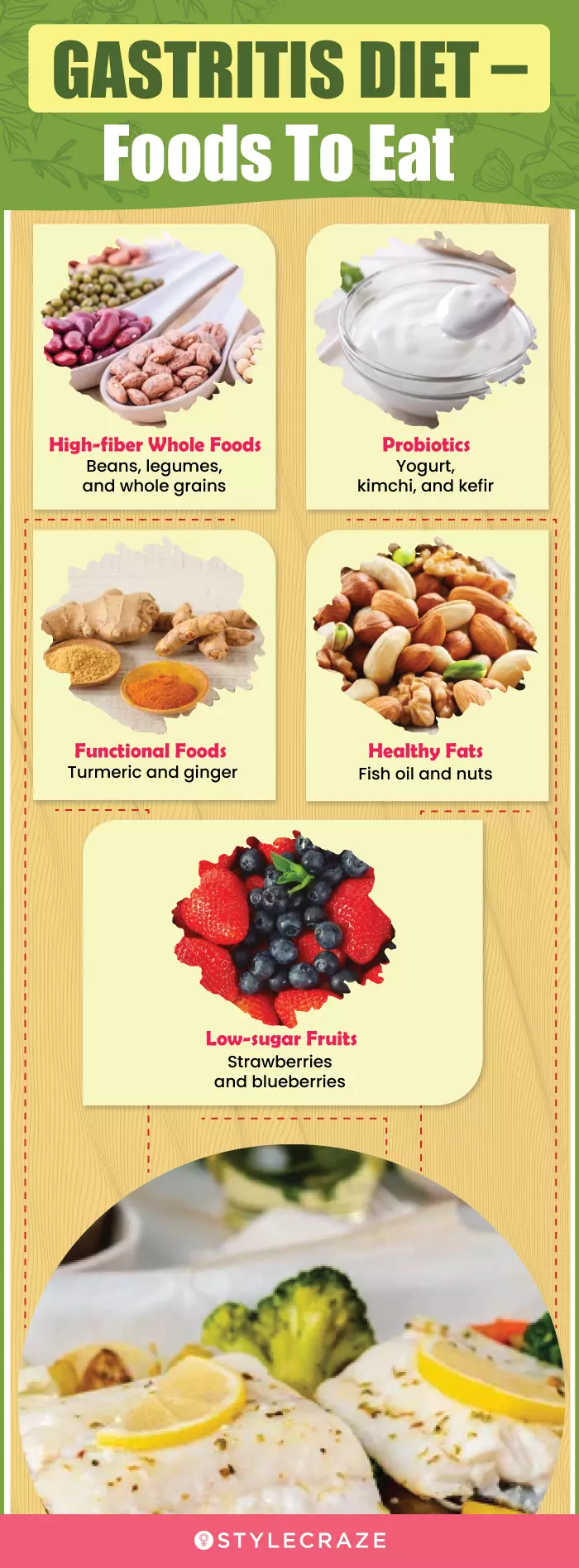
The chronic gastritis diet is aimed at reducing inflammation of the stomach’s lining and combating the bacteria (Helicobacter pylori) that cause this condition. Foods rich in probiotics and flavonoidsi A group of natural substances found in fruits, vegetables, and grains with beneficial anti-inflammatory and antioxidant properties. show antibacterial activity against H. pylori. Hence, they must be consumed on priority. You can also take foods high in fiber, protein, and healthy fats for a healthy digestive system. Make it a point to avoid acidic fruits, alcohol, caffeine, sodas, carbonated drinks, spicy foods, and dairy products to avoid upsetting your stomach and worsening gastritis. Follow the simple recipes listed above to kickstart your diet without any hassles.
Frequently Asked Questions
What drinks are good for gastritis?
According to Eva De Angelis, a dietitian nutritionist, the first choice should ideally be always water. She also often recommends chamomile tea or other herbal teas. She adds, “Although, some people can tolerate low-acidity juices (such as carrot, watermelon, or pear) and even weak tea/coffee. That’s why I always suggest keeping a food journal to keep track of foods and symptoms.”
Does lemon water help with gastritis?
Since lemons are highly acidic fruits they can irritate the stomach if consumed in large quantities. However, once our bodies metabolize lemon, it has an alkalizing effect.
Jesse Feder adds, “If you mix a little bit of lemon with a glass of water or put a slice in your water this may actually help soothe your stomach. The antioxidants and other compounds in lemons can help reduce inflammation in the stomach and kill off some of the bad bacteria.
He adds, “This is a question I get often as a dietitian. I always tell my clients that if they are interested in having lemon water, to try a little lemon at a time and see how their stomachs react. This is because some people have really sensitive stomachs and may have a negative reaction compared to others.”
Can I eat salad when I have gastritis?
Yes, you can eat a salad when you have gastritis. Choose low-acid foods to make your salad. But, do not use any salad dressing.
Is curd good for gastritis problems?
Yes, curd contains probiotics that increase the good bacteria in your gut. This, in turn, reduces inflammation, making it one of the effective home remedies for gastritis.
Can I eat bread when I have gastritis?
White bread may increase the acid secretion in your stomach and aggravate the gastritis symptoms. Choose whole-wheat bread and limit the portions.
Can stress and anxiety cause gastritis?
Yes, stress and anxiety can increase acid secretion due to hormonal action. Reduce stress as much as possible to keep gastrointestinal issues at bay.
Does drinking water help gastritis?
Yes, drinking plenty of water controls the acidity of your gastric juices. Hydration can help speed up your healing process and help you recover from gastritis faster.
How long does it take for gastritis to heal?
This depends on the severity of the condition. Acute gastritis takes between 2 to 10 days to heal. Chronic gastritis may last between a few weeks to a few months if not treated early and properly.
Key Takeaways
- Gastritis is a stomach lining inflammation that leads to indigestion.
- The diet for gastritis should contain healthy fats, fiber, lean proteins, probiotics, and flavonoids.
Avoid foods that are spicy, fatty, or fried. - Avoid alcohol, caffeine, citrus fruits and juices, tomatoes and tomato-based products, chocolate, mint, garlic, onions, and pickles.
- Consume high-fiber whole foods, chicken, nuts, seeds, and vegetable juices.
- Consume low-acid fruits and fermented foods like kombucha or yogurt
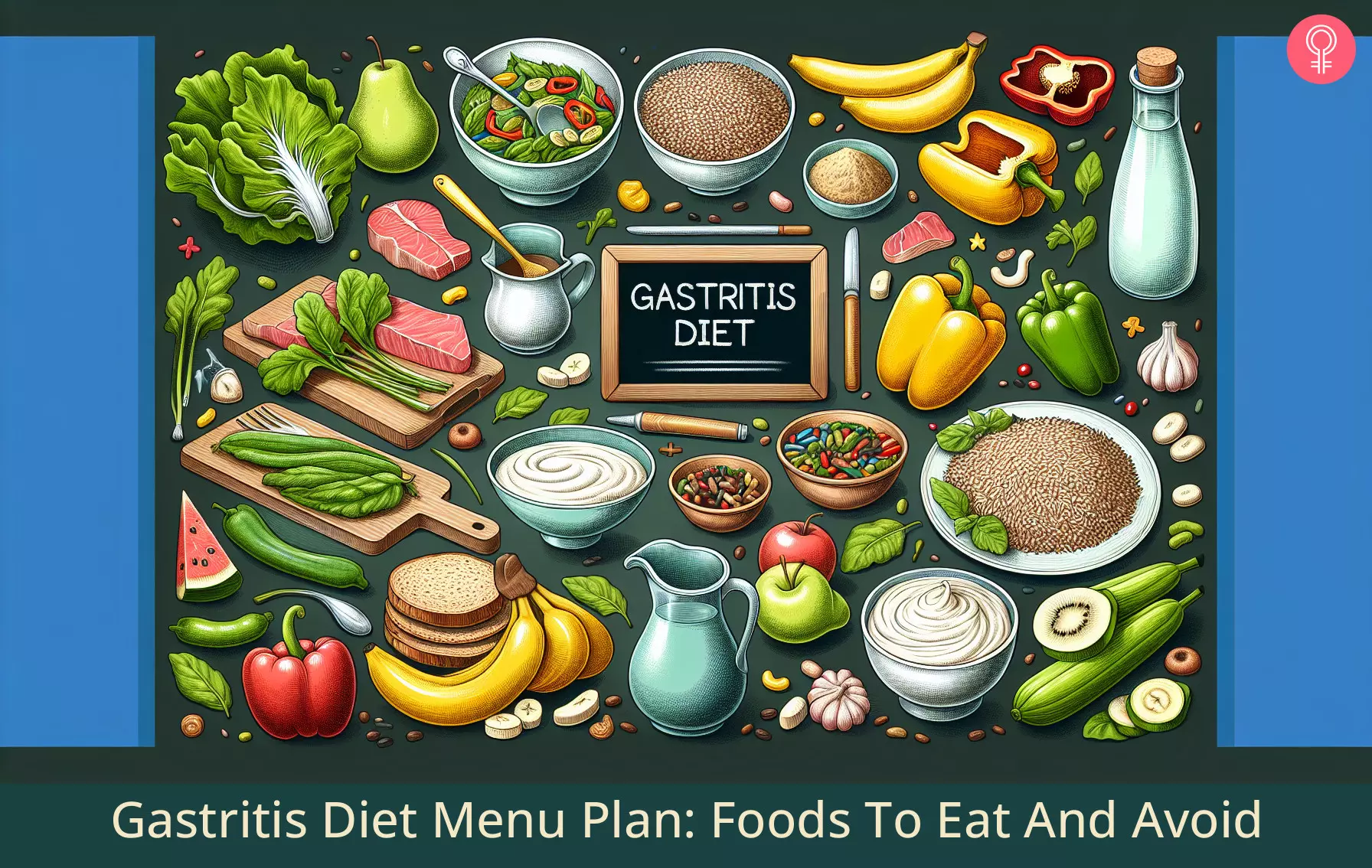
Image: Dall·E/StyleCraze Design Team
References
Articles on StyleCraze are backed by verified information from peer-reviewed and academic research papers, reputed organizations, research institutions, and medical associations to ensure accuracy and relevance. Read our editorial policy to learn more.
- “Gastritis: Overview.” InformedHealth.org [Internet]., U.S. National Library of Medicine, 28 June 2018, www.ncbi.nlm.nih.gov/books/NBK310265/.
https://www.ncbi.nlm.nih.gov/books/NBK310265/ - Makki, Kassem et al. “The Impact of Dietary Fiber on Gut Microbiota in Host Health and Disease.” Cell host & microbe vol. 23,6 (2018): 705-715. doi:10.1016/j.chom.2018.05.012
https://pubmed.ncbi.nlm.nih.gov/29902436/ - Calder, Philip C. “n-3 polyunsaturated fatty acids, inflammation, and inflammatory diseases.” The American journal of clinical nutrition vol. 83,6 Suppl (2006): 1505S-1519S. doi:10.1093/ajcn/83.6.1505S
https://pubmed.ncbi.nlm.nih.gov/16841861/ - Song, Han-Yi et al. “What Roles Do Probiotics Play in the Eradication of Helicobacter pylori? Current Knowledge and Ongoing Research.” Gastroenterology research and practice vol. 2018 9379480. 16 Oct. 2018, doi:10.1155/2018/9379480
https://www.ncbi.nlm.nih.gov/pmc/articles/PMC6206577/ - Xie, Yixi et al. “Antibacterial activities of flavonoids: structure-activity relationship and mechanism.” Current medicinal chemistry vol. 22,1 (2015): 132-49. doi:10.2174/0929867321666140916113443
https://pubmed.ncbi.nlm.nih.gov/25245513/
Read full bio of Dr. Jill Carnahan
- Jesse Feder, RDN/LDN, is a Clinical Dietitian at the Memorial Regional Hospital. He is also a certified by the American College of Sports Medicine as a personal trainer (ACSM-CPT) and the National Strength and Conditioning Association as a Certified Strength and Conditioning Specialist (NSCA-CSCS).
 Jesse Feder, RDN/LDN, is a Clinical Dietitian at the Memorial Regional Hospital. He is also a certified by the American College of Sports Medicine as a personal trainer (ACSM-CPT) and the National Strength and Conditioning Association as a Certified Strength and Conditioning Specialist (NSCA-CSCS).
Jesse Feder, RDN/LDN, is a Clinical Dietitian at the Memorial Regional Hospital. He is also a certified by the American College of Sports Medicine as a personal trainer (ACSM-CPT) and the National Strength and Conditioning Association as a Certified Strength and Conditioning Specialist (NSCA-CSCS).
Read full bio of Priyanka Sadhukhan
Read full bio of Arshiya Syeda
Read full bio of Moksha Gandhi






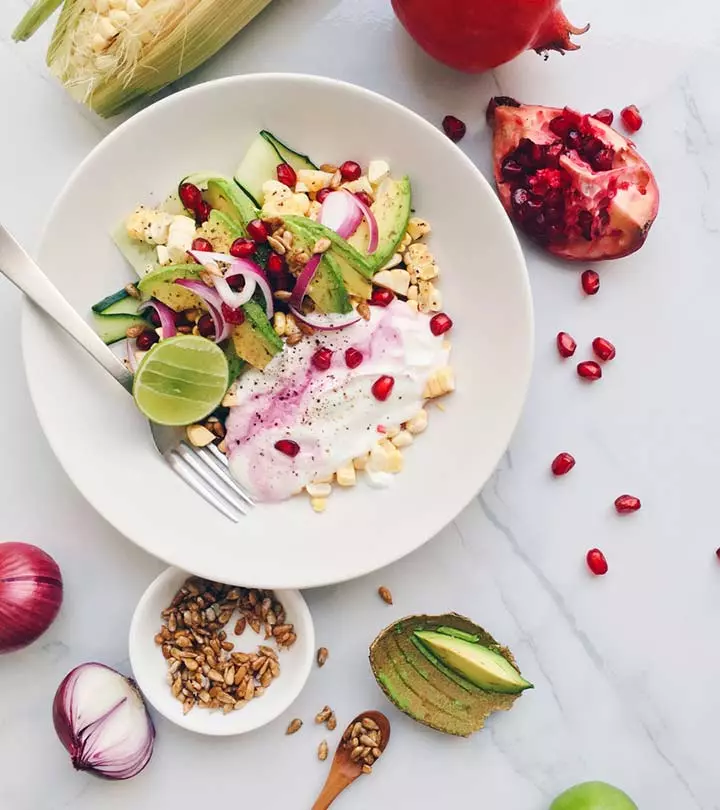




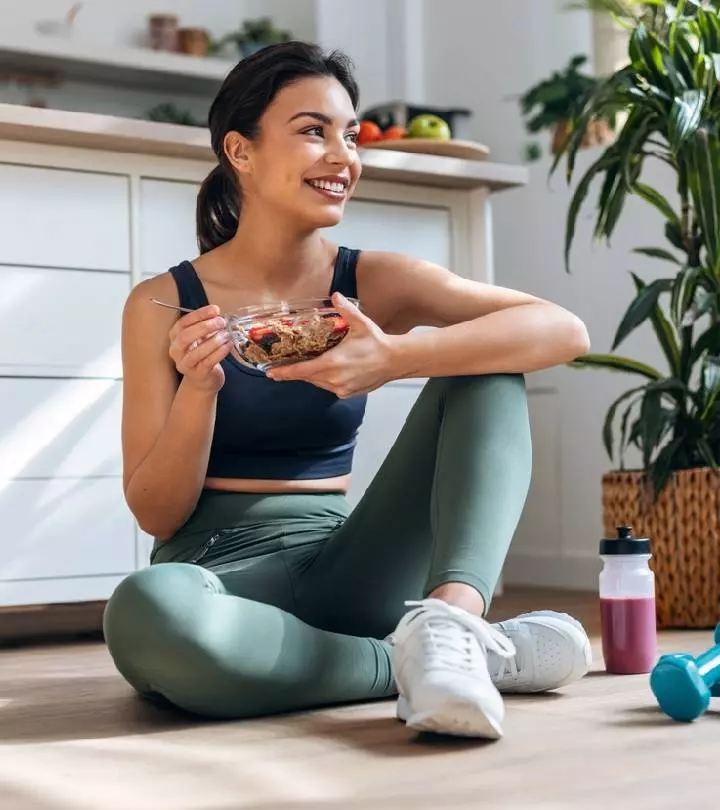
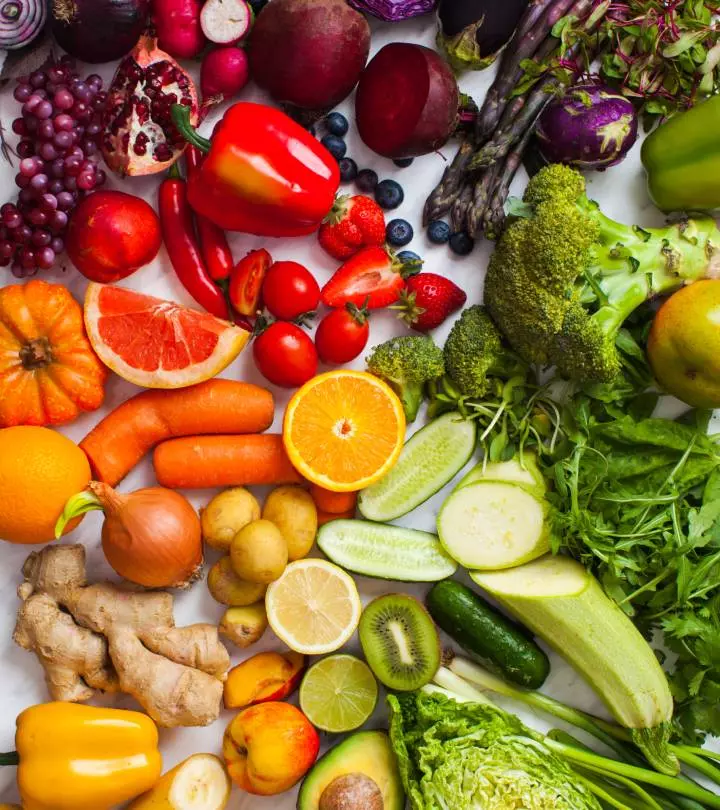
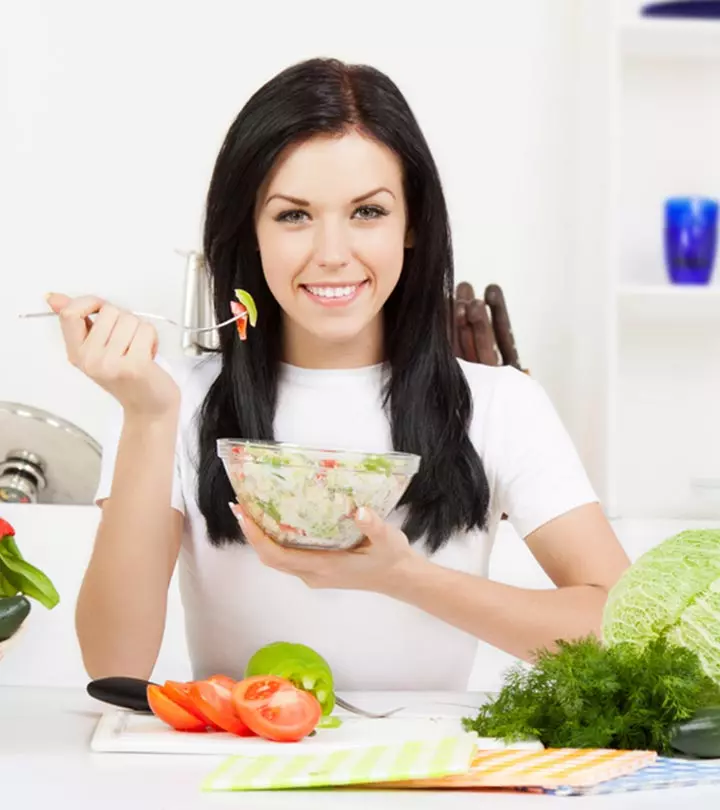
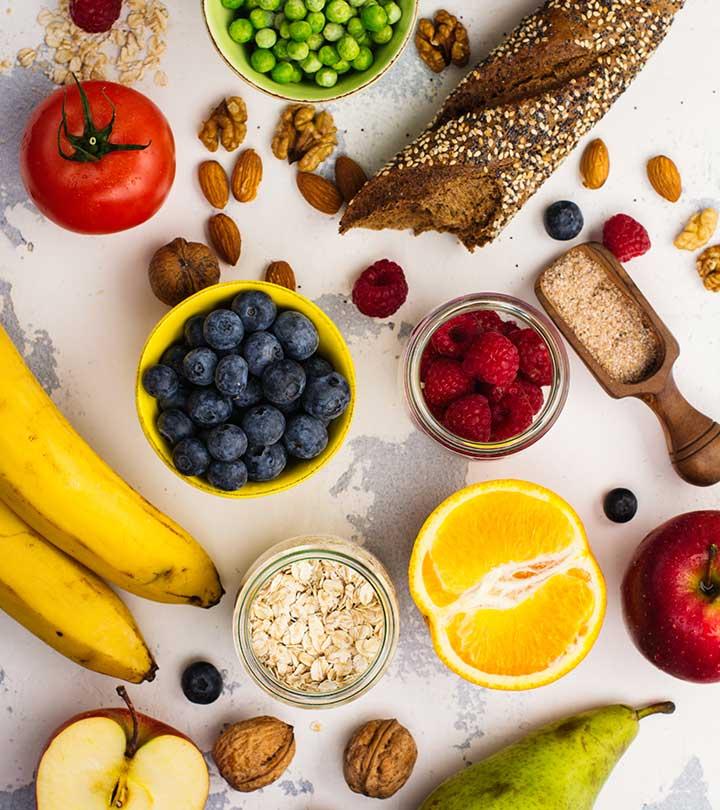
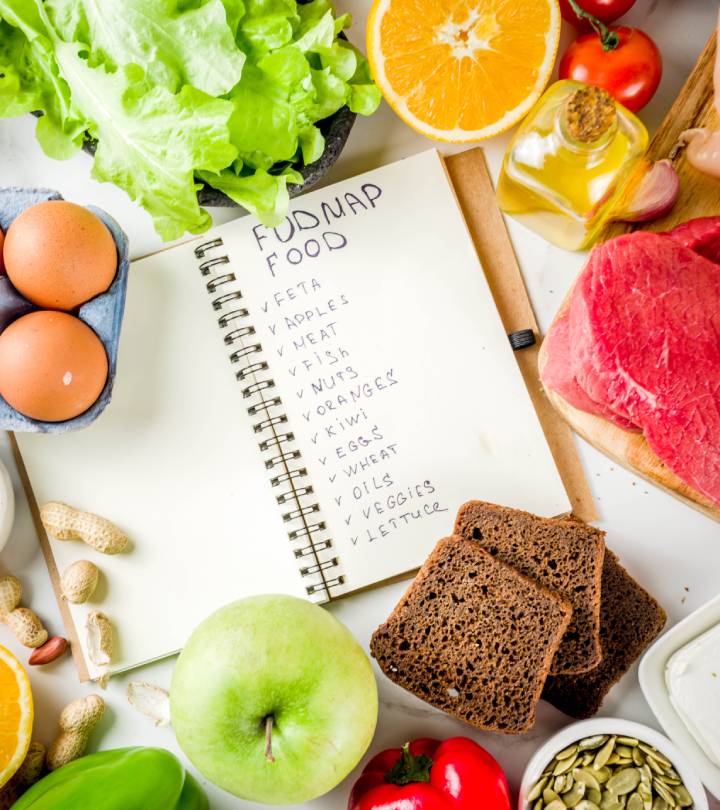
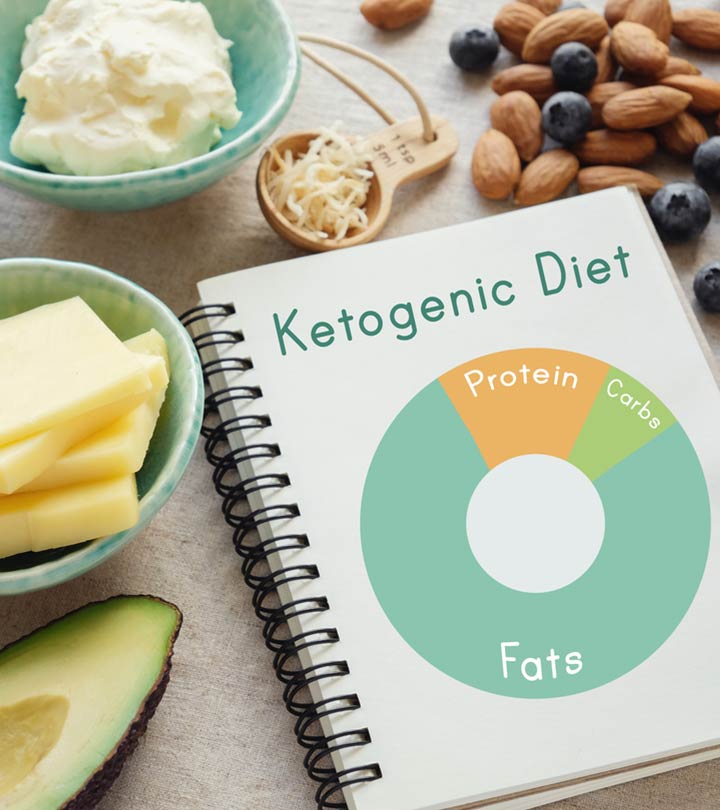
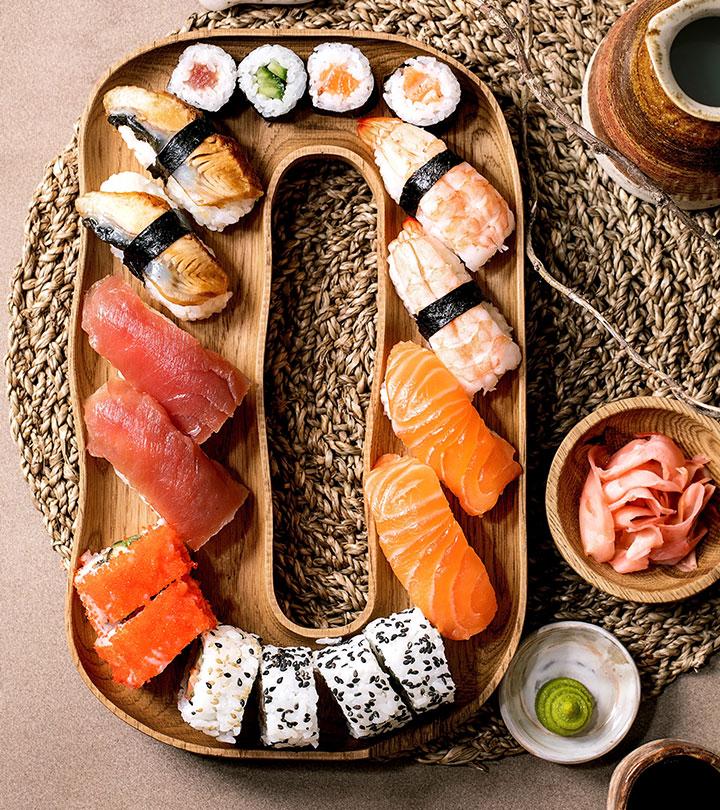
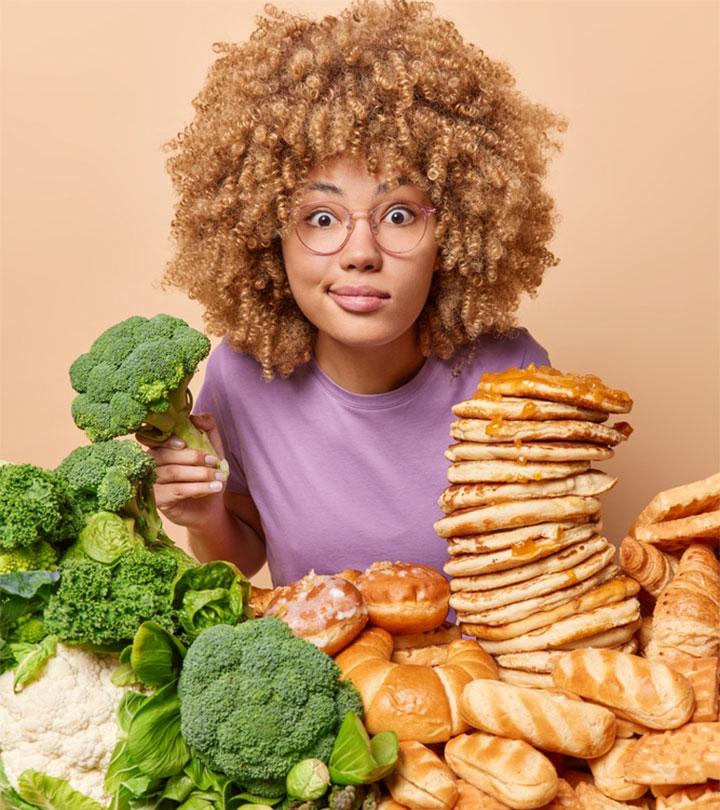
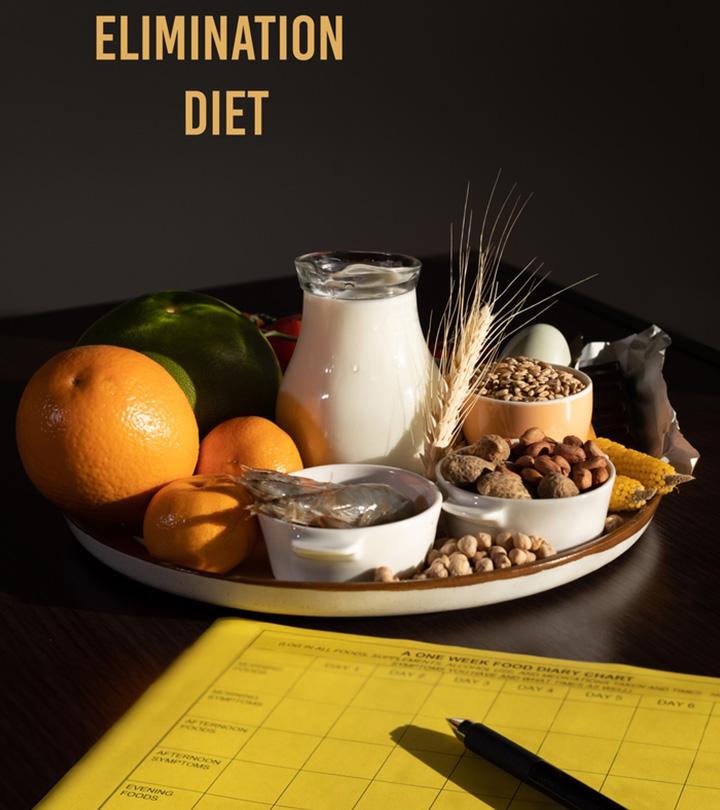


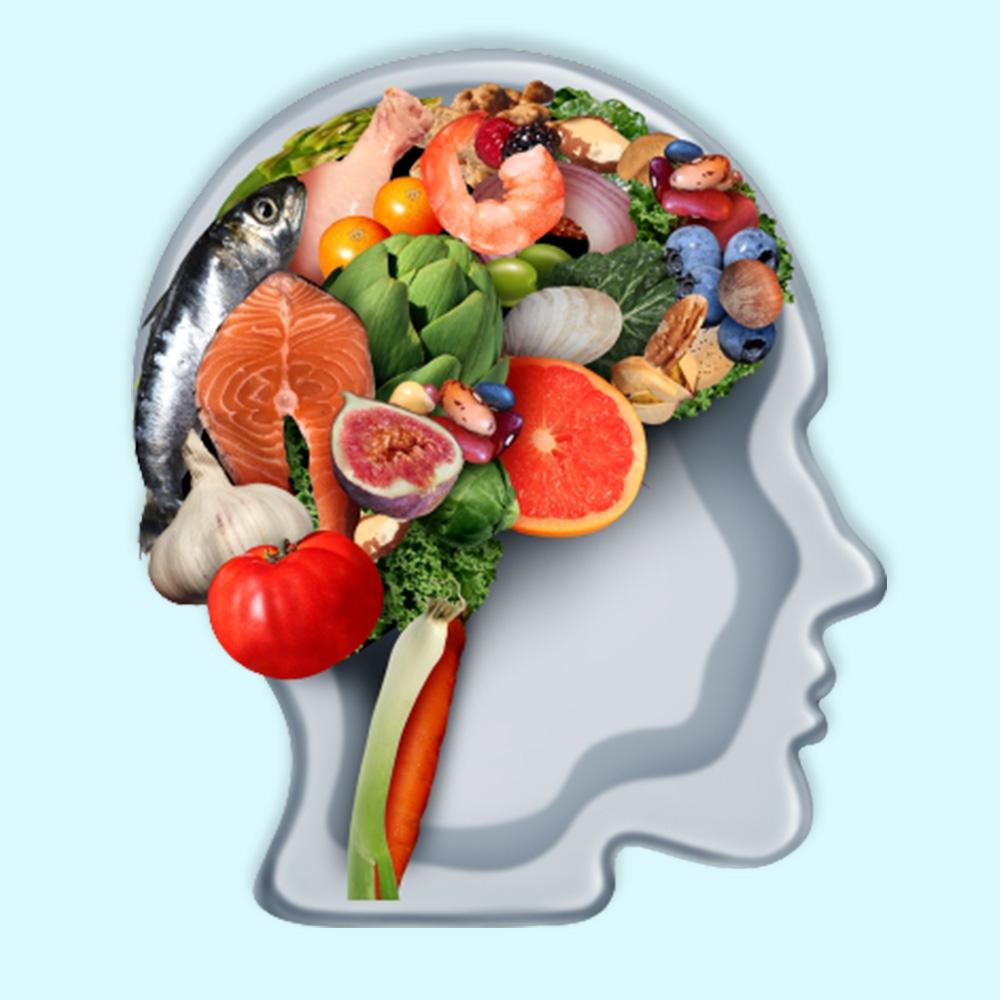
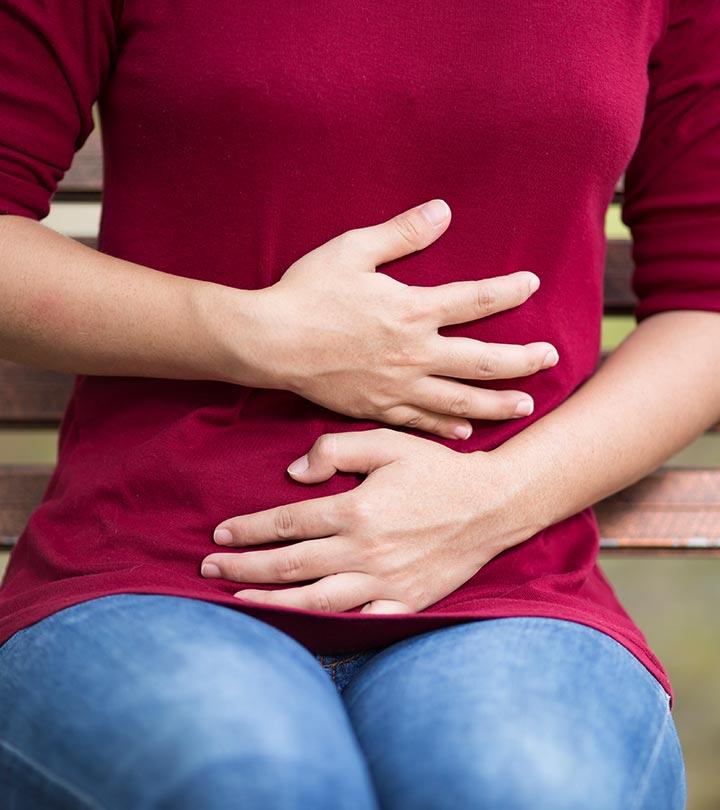
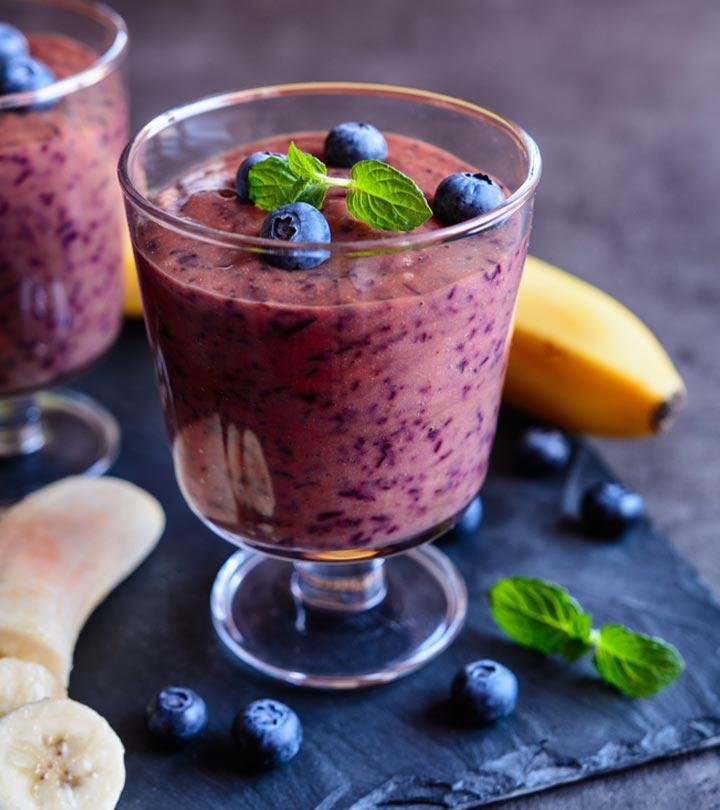
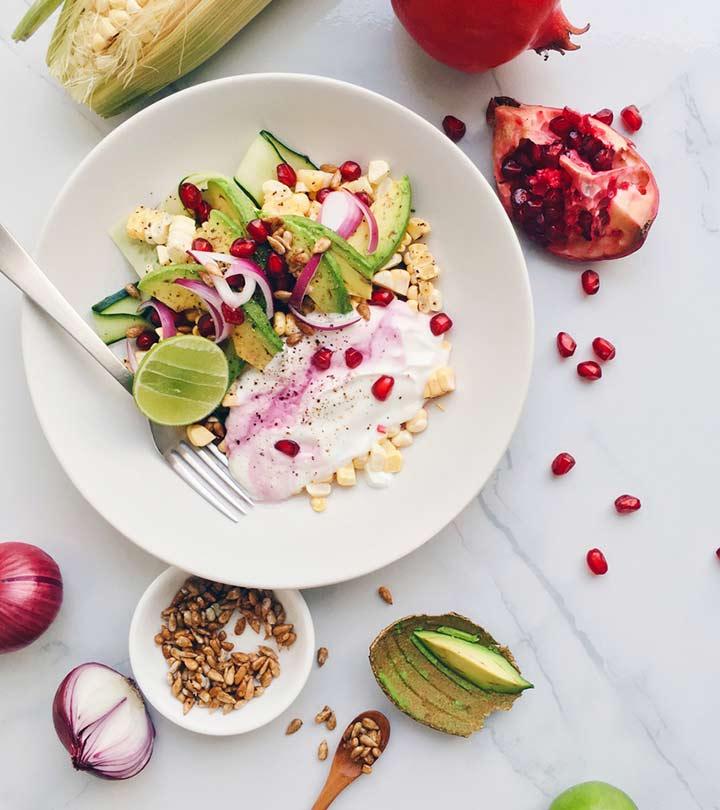
Community Experiences
Join the conversation and become a part of our empowering community! Share your stories, experiences, and insights to connect with other beauty, lifestyle, and health enthusiasts.